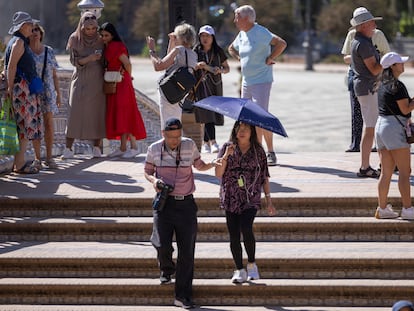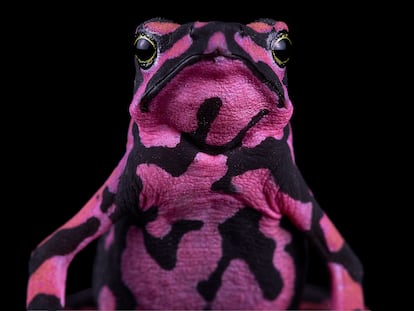Severe droughts push the Amazon to its limit: ‘We don’t know what will become of us’
The low flow of rivers in northern Brazil has prevented navigation, the only way to reach thousands of small municipalities that are about to run out of water and food
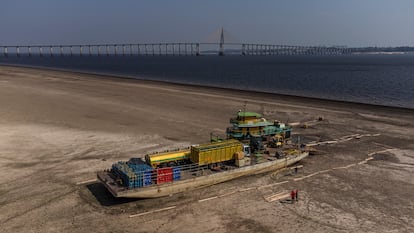
The Brazilian Amazon is experiencing a historic drought, which is pushing its inhabitants to their limit. The lack of rain has caused a sharp decrease in the flow of rivers, affecting subsistence agriculture and the supply of drinking water. On top of that, the inability of boats to navigate the shallow rivers threatens to leave hundreds of thousands of vulnerable people living in the most remote corners of Brazil completely stranded. The rivers in the north of the country are like water highways: practically everyone — and everything — moves by river. Authorities estimate that more than 500,000 people could be affected by food, water and medicine shortages in the coming weeks.
“All the communities are going to be isolated. Here, our river is only 20 centimeters deep… we have to drag the canoes,” explains Adamor Lima, chief of the Capanã Indigenous territory, who spoke to EL PAÍS by phone. Whenever any of the 150 inhabitants of the village want to reach the nearest town, Manicoré, they have to make an eight-hour-long boat trip downriver. The Indigenous residents usually go into town once a month to run errands and do some shopping. But the larger ships — with more affordable tickets — no longer make the trip. The river is covered by sand banks and stones that make navigation impossible. The fish that Adamor used to catch in front of his house every day aren’t there anymore, either. The water is too hot — now, the fish are concentrated in a deeper bend in the river that’s very difficult to access.
Not far from the village, a gigantic hydroelectric plant on the Madeira River shut off its turbines last Monday, due to lack of water. It’s the fourth-largest hydroelectric plant in the country, distributing energy to all of Brazil. At the moment, though, according to the government, there’s still no risk of blackouts.
For Indigenous villages and riverside populations, where there’s hardly any drinking water supply and water is taken directly from the river, drought can be the prelude to a health crisis. It’s the great paradox: there’s a lack of water for the inhabitants of the region that has the most fresh water reserves in the world.
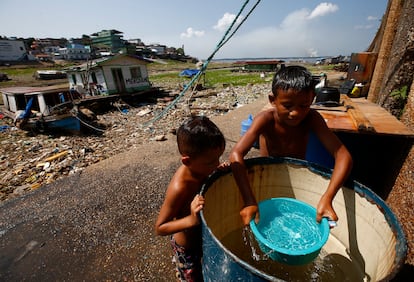

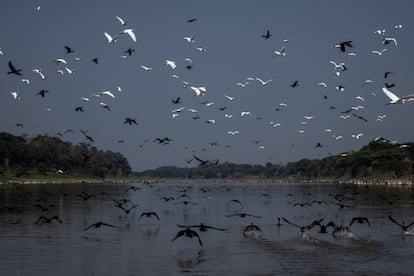
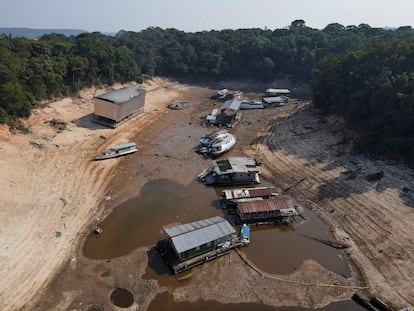
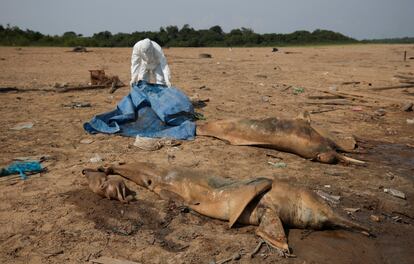
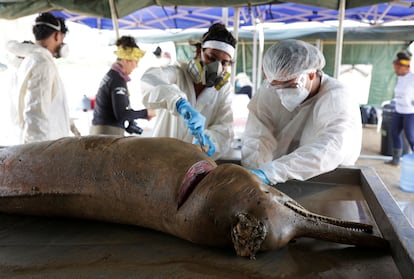
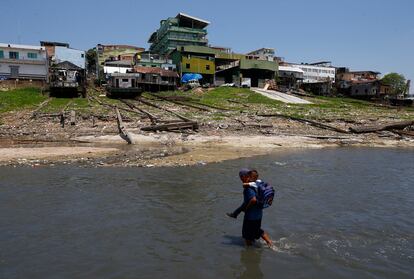
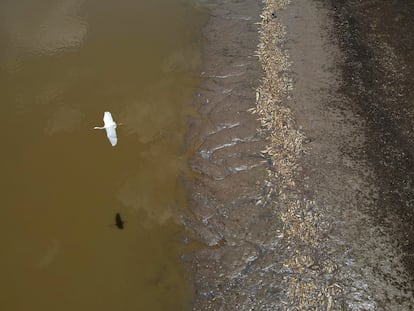
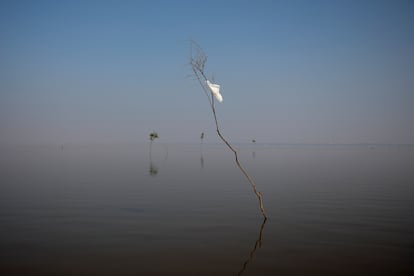



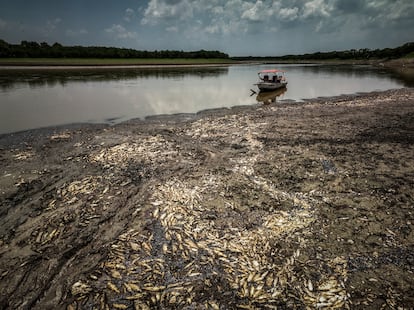
But drought is, above all, a major environmental catastrophe. In the Lake Tefé region, more than 125 dolphins have been found dead in recent days. The corpses of the famous creatures, protagonists of countless local legends, are now bait for vultures. According to the Mamirauá Institute — which is carrying out an operation to save them — the high temperature of the water is the main cause of death. Certainly, the tragedy is in the shallow, warm water, but also in the treetops. With the air drier than ever, it’s the ideal moment for deforesters to take advantage of the climate to burn vegetation and open up land for new pastures. According to official data, in September of 2023, there were 6,991 fires, the second-worst month on record since 1998.
The collateral damage of extreme drought is everywhere. In the small village of Villa Arumã, less than 1,000 people live in small houses scattered on the banks of the Purus River, on a kind of sandy cliff. Last week, a landslide swallowed up half the town. Two people died and 45 houses disappeared. “It wasn’t something normal — it was like a black hole that engulfed our entire neighborhood,” laments Kely Regina Dantas, a public school worker, between sobs.
Landslides are relatively common during the dry season, but this year, things have gotten worse. When the water that supports the weight of the land in the water table disappears, the earth simply crumbles. “We’ve been up for several nights keeping watch. [Me], my husband and my son, we take turns. The neighborhood is full of cracks.” The anxiety over the tragedy is combined with the uncertainty of how to fill the refrigerator. The main source of income for this family was from fishing pirarucú, a fish that easily weighs more than 220 pounds. But right now, fishing is impossible, because the fish have been isolated in lakes. Transporting them by boat is also impossible.
“At the rate this is going, we don’t know what’s going to happen to us. Everything here comes directly from Manaus, which is almost two days away by boat. If we’re left incommunicado, I don’t know how we’re going to survive,” Kely sighs.
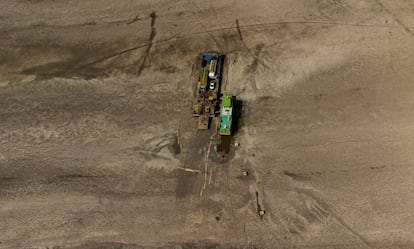
In Manaus, the capital of Amazonas — a city of more than two million inhabitants embedded in the jungle — there’s an important industrial hub where many of Brazil’s televisions, dishwashers and air conditioning units are made. Businessmen across the country are already afraid of being left with empty shelves on Black Friday (November 24), because all that merchandise leaves the city in trucks aboard rafts, which can stop floating at any moment.
At the moment, the Brazilian authorities have declared a state of emergency in 55 municipalities. Baskets containing clean water, non-perishable food, hygiene and health kits are already being distributed. The government promised the logistical support of the Air Force and the Navy, which have proven experience in reaching the deepest parts of the jungle. During elections, soldiers bring electronic ballot boxes to every single district, by helicopter or canoe if necessary.
During the dry season in the Amazon (from July to December, approximately) it’s normal for the rivers to drop by several feet and for beaches and sandbanks to appear. However, according to Virgilio Viana, the coordinator of the Sustainable Amazon Foundation (FAS), this year has been different. El Niño is partly to blame, since this climate phenomenon inhibits the formation of clouds and rain. But the scenario has been worsened by the abnormal warming of the waters of the North Atlantic, an occurrence that’s related to climate change. “El Niño is always recurrent. What we see now is an increase in its magnitude,” the specialist notes.
His NGO, like many others in the region, has already mobilized, with workers distributing chlorine, water purifiers and gasoline in the villages. Not so much for the motor boats, which will soon be stranded, but for the little stoves that the Amazonians use to fry cassava bread and cook fish, the basis of their diet.
Viana, who, 20 years ago, was secretary of the Environment in the state government of Amazonas, admits that, at the moment, urgent bandaid solutions are being put in place. In the long-term, he emphasizes, solutions must involve betting on solar panels, expanding internet access and supporting family farming, to give more autonomy to the communities, villages and cities that are now on the brink of collapse. “We must prepare for the next calamities… we must be resilient and adapt to climate change.”
Sign up for our weekly newsletter to get more English-language news coverage from EL PAÍS USA Edition
Tu suscripción se está usando en otro dispositivo
¿Quieres añadir otro usuario a tu suscripción?
Si continúas leyendo en este dispositivo, no se podrá leer en el otro.
FlechaTu suscripción se está usando en otro dispositivo y solo puedes acceder a EL PAÍS desde un dispositivo a la vez.
Si quieres compartir tu cuenta, cambia tu suscripción a la modalidad Premium, así podrás añadir otro usuario. Cada uno accederá con su propia cuenta de email, lo que os permitirá personalizar vuestra experiencia en EL PAÍS.
¿Tienes una suscripción de empresa? Accede aquí para contratar más cuentas.
En el caso de no saber quién está usando tu cuenta, te recomendamos cambiar tu contraseña aquí.
Si decides continuar compartiendo tu cuenta, este mensaje se mostrará en tu dispositivo y en el de la otra persona que está usando tu cuenta de forma indefinida, afectando a tu experiencia de lectura. Puedes consultar aquí los términos y condiciones de la suscripción digital.
More information
Últimas noticias
NASA discovers Titan doesn’t have an ocean, but a ‘slushy ice layer’ that increases possibility of life
Innocence lost in the forest of the child soldiers: ‘Each leader of the armed group had his girls’
‘Fallout’ or how the world’s largest company turned an anti-capitalist apocalyptic Western into a phenomenon
From inflation to defending migrants: Eileen Higgins and Zohran Mamdani inaugurate the new Democratic resistance against Trump
Most viewed
- ‘El Limones’ and the growing union disguise of Mexican organized crime
- Christian Louboutin: ‘Young people don’t want to be like their parents. And if their parents wear sneakers, they’re going to look for something else’
- The low-cost creative revolution: How technology is making art accessible to everyone
- ‘We are dying’: Cuba sinks into a health crisis amid medicine shortages and misdiagnosis
- A mountaineer, accused of manslaughter for the death of his partner during a climb: He silenced his phone and refused a helicopter rescue
